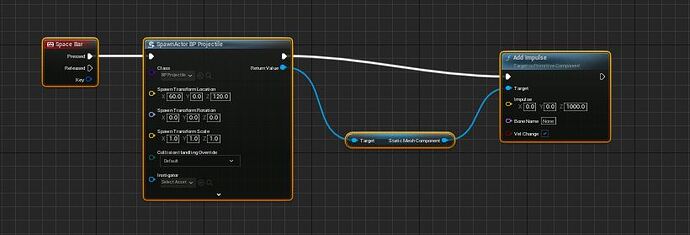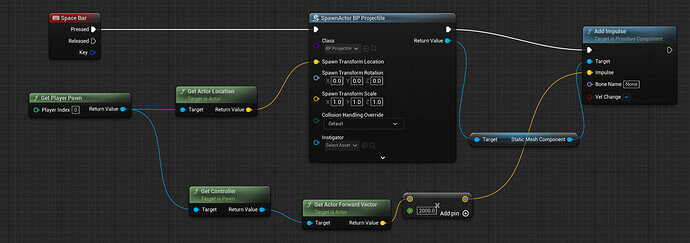Lectures Include:
-
Section Intro - Warehouse Wreckage - We overview what we want from our game and what concepts we will cover.
-
Project Setup - We create a new project using the “Starter Content” and learn to use the Content Browser to open different Maps. We then learn to open the Level Blueprint Editor from a given map.
-
Blueprint Event Graph - We use the Level Blueprint Event Graph for the first time and print basic text to the screen in response to events.
-
Physics Simulation - We learn how to switch on Physics simulation and have a bit of fun.
-
Objects and References - We learn about Object, References and Components and use this knowledge in Blueprint to query objects in our scene and get info about them.
-
Adding an Impulse - We use Blueprints to add an impulse to an object in our scene. We see how to trigger this with a key press.
-
Blueprint Classes and Instances - We create a reusable Blueprint and see how updating it changes multiple instances.
-
Spawning Actors - We spawn an actor using our new blueprint and use the instance to add force.
-
Data Types - We look into the different data pin colours and see that they are Types. We see what Types are and how they constrain our connections.
-
Pawns and Actor Location - We see how the engine spawns a pawn for us to control at the player start. We see how to get access to the pawn in the Event Graph and use it’s Transform.
-
Control Rotation - We see how the Pawn’s Actor Rotation doesn’t help much. We find out how to get the control rotation and apply that to the ball.
-
Vector Addition & Multiplication - We learn how Vector addition, subtraction and multiplication work. We learn to do this with an arrow representation as well as coordinates.
-
Get Forward Vector - We look at what the Forward Vector is. We learn to multiply it to give us an impulse that launches our Projectile in the right direction.
-
Importing Assets - We see how to search the Marketplace for asset, especially free. And how to download and add these to our projects.
-
Geometry Brushes (BSP) - We create a new level and build some walls using additive and subtractive BSP brushes. We also bring our existing Blueprint functionality into the level.
-
Materials and Lighting - We learn to add materials to our Geometry brushes and adjust the directional lighting of the scene.
-
Actor Components - We add in meshes to our scene and see how components can be used to make more complex actors.
-
Collision Meshes - We see what a collision mesh is and we see how we can generate a simplified mesh to behave well with physics simulations.
-
Variables - We learn how variables can be used to store values. We see how to use Blueprint to set and get these values. We use this to keep track of our ammo.
-
Booleans and Branches - We learn how to use Comparison Operators to get true/false answers about a numeric relationship. We then use these “booleans” to execute different code using a Branch Node.
-
Functions - We learn why it’s important to write self documenting code. We see how we can use functions as a great alternative to comments. We also see how functions lead to code reuse by printing our Ammo in different cases.
-
Return Types - We see how to create functions from scratch in the My Blueprint pane. We also see how to add inputs and outputs.
-
Pure Functions - We learn what “side effects” are. We learn that a function without execution pins is “Pure” and how to mark a function as such.
-
Member Functions - We see how code can live in blueprint classes and have access to the instance. We use this to print a balls name and we move the “Launch” code there too.
-
Loading Levels & Delay Nodes - We see how to load a level from Blueprint and we can reload the current level by using Get Current Level Name. We call this functionality after a Delay.
-
Wrap-up and Recap - We review at all the concepts covered in this section and what could be extended in our game.








